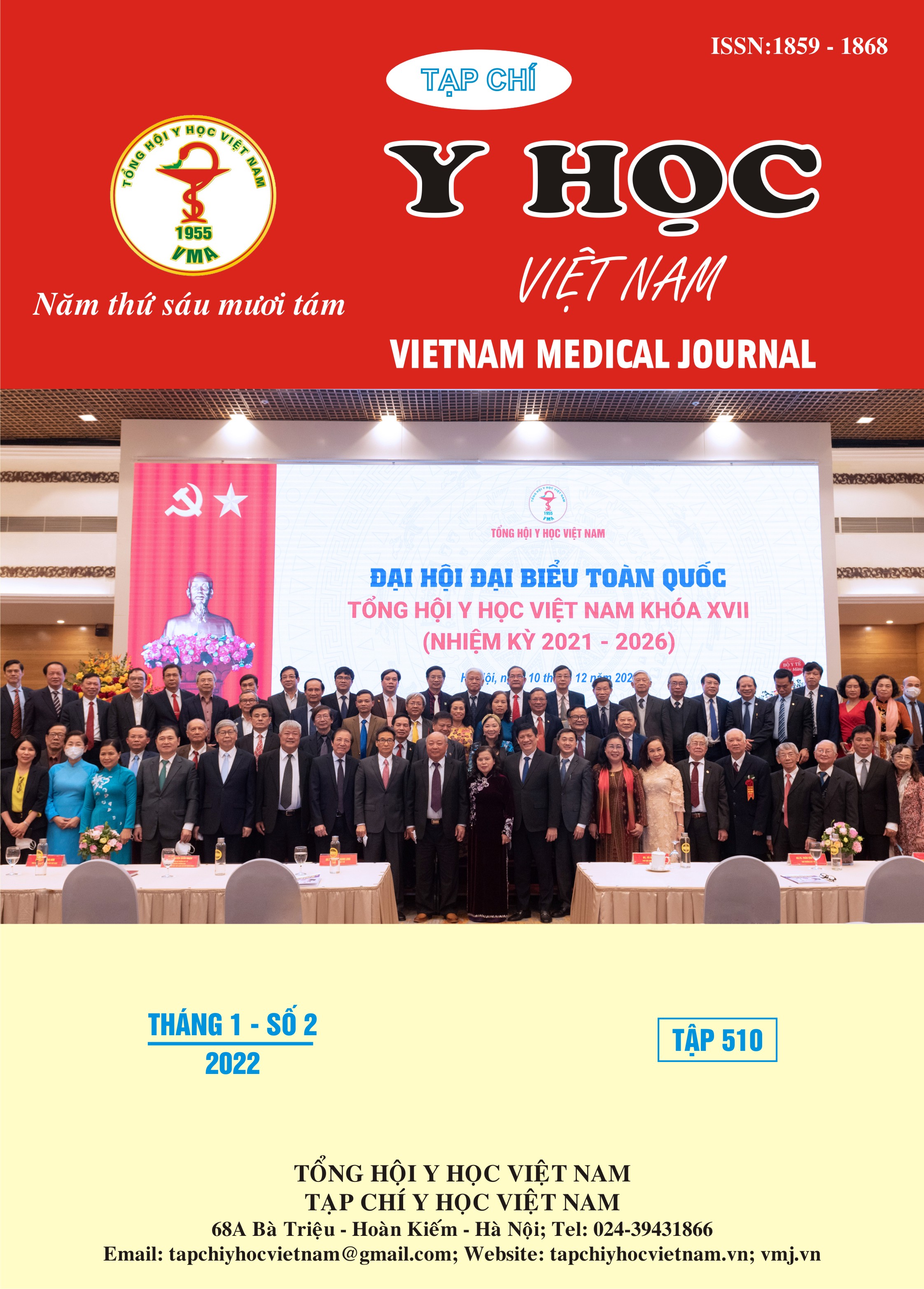ASSESS THE EFFECTIVENESS OF ENDOTRACHEAL INTUBATION WITH VIDEO SUPPORT FOR CERVICAL SPINE SURGERY
Main Article Content
Abstract
Objective: To compare the effectiveness of airway management with video-assisted laryngoscope (Uescope) and laryngoscope with Macintosh for cervical surgery. Evaluation of the safety and adverse effects of intubation with video-assisted laryngoscope and laryngoscope with Macintosh for cervical surgery. Methods: 80 patients with cervical injuried undergoing cervical spine surgery included group I using an intubation with Video support (n= 40) and group II intubated with a Macintosh (n=40). The first time success rate monitoring, Cormack and Lehane, POGO, intubation time, difficulty intubation and hemodynamic monitoring before 1 minute, after 1 minute, after 5 minutes of intubation and follow-up sore throat, hoarseness, oropharyngeal trauma after surgery. Results: Cormack and Lehane levels in group I were lower than that in group II, p < 0.05, POGO rate in group I was higher than group II with p < 0.05; intubation time in group I was faster than group II with p < 0.05; the success rate in group I was higher than group II with p < 0.05; Pulse, mean blood pressure 1st minute after intubation in group I was lower than that in group II with p < 0.05; sore throat, hoarseness in group I was lower than that of group II with p < 0 .05. Conclusions: The rate of POGO in group I is higher than that of group II, Video supporting glottis vision is clearer than Macintsh laryngoscope because the degree of Cormack and Lehane in group I is lower than that of group II (p < 0.05), the rate of first success in group I was higher than that in group II with p < 0.05; the time of intubation in group I was faster than that in group II, there was a difference with p < 0.05; IDS score in group I was lower than that in group II with p < 0.05; hemodynamics after 1 minute intubation of group II changed more than group I with p <0.05; the rate of sore throat, hoarseness after cervical spine surgery in group I was lower than that of group II with p < 0.05.
Article Details
Keywords
Intubation with video support, laryngoscopy video
References
2. Michael F. Aziz et al (2012), “Comparative Effectiveness of the C-MAC Video Laryngoscope versus Direct Laryngoscopy in the Setting of the Predicted Difficult Airway”, Anesthesiology; 116: 515-7.
3. Xeu F. S, G. H. Zhang et al (2007), “The clinical assessmant of Glidescope in orotracheal intubation under general anesthesia”, Minerva anestesiol 73:451-7.
4. Gusen Seok Choi et al (2011), “A comparative study on the usefulness of the Glidescope or Macintosh laryngoscope when intubating normal airways”, Korean j Anesthesiol 60(5): 339-343.
5. Roya Ymul MD et al (2016), “Comparison of three video laryngoscopy devices to direct laryngoscopy for intubating obese patients: a randomized trial”, Journal of Clinical Anesthesia 31, 71-77.
6. Roya Yumul MD et al (2016), “Comparison of the C-MAC video laryngoscope to a flexible fiberoptic scope for intubation with cervical spine immobilization”, Journal of Anesthesia 31, 46-52.
7. Ali Qe et al (2017), “A comparative evaluation of king vision video laryngoscope (channelled blade), McCoy and Macintosh laryngoscopes for tracheal intubation in patiens with immobiliezed cervical spine”, Sri Lankan of anaesthesiology: 25(2): 70-75
8. Atabak Najafi et al (2014), “Postoperative sore throat after laryngoscopy with Macintosh or glidescope video laryngoscope blade in normal airway patients”, Anesth pain med 3(3); et 5136.
9. Kalingarayar S et all (2017). “Airway trauma during diffcult intubation from the frying pan into the fre?”, Indian J Anaesth 2017, 61, 437-439.


